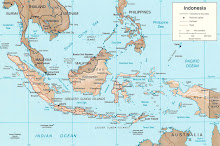 For the people of Bali, Mount Agung is a holy mountain that is a sign of the Almighty. Mount Agung is the highest mountain on the island of Bali. This volcano has a height of about 3100 meters above sea level. In 1963 Mount Agung eruption killed about 1,000 people and destroyed more than 100,000 homes. It’s a miracle, that disaster did not make significant damage to the Great Temple of Pura Besakih, which is situated approximately only 1 km from the Mount Agung.
For the people of Bali, Mount Agung is a holy mountain that is a sign of the Almighty. Mount Agung is the highest mountain on the island of Bali. This volcano has a height of about 3100 meters above sea level. In 1963 Mount Agung eruption killed about 1,000 people and destroyed more than 100,000 homes. It’s a miracle, that disaster did not make significant damage to the Great Temple of Pura Besakih, which is situated approximately only 1 km from the Mount Agung.Mount Agung is one of tourism objects in Indonesia. As an active volcano Mount Agung presents a panorama of crater smoke, spray of sand, and gravel from its 500 meters in width crater. Many vantage points offer spectacular views of the area. If the weather is sunny, from the top of this mountain tourist can enjoy the scenery of the cities in the surrounding areas. This is the natural beauty that attracts tourists to climb the peak of Mount Agung.
 In order to be safe for climbing, there are some things should be obeyed by mountain climber. It is not permitted to climb when major religious events are held at Temple of Pura Besakih and Temple of Pura Pasar Agung, which is most of April. The local community believes if it’s violated, disaster will come to such climber. The best time for a climb is during the dry season of May through October.
In order to be safe for climbing, there are some things should be obeyed by mountain climber. It is not permitted to climb when major religious events are held at Temple of Pura Besakih and Temple of Pura Pasar Agung, which is most of April. The local community believes if it’s violated, disaster will come to such climber. The best time for a climb is during the dry season of May through October.The Balinese consider Mount Agung to be the center of the world. All temples in Bali point towards Mount Agung. The Great Temple of Pura Besakih, with its uncountable steps, solemnly wait for the arrival of the gods and the goddesses, for when they step down from heaven, they come to Pura Besakih Temple by way of Mount Agung.
Gunung Agung lies in the Karangasem Regency, about 25 km north Denpasar, the capital of Bali Island, Republic of Indonesia.








